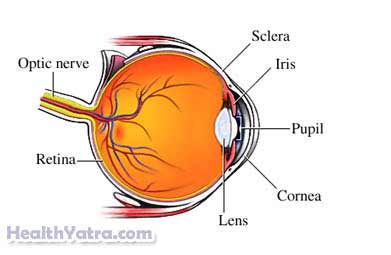Usher Syndrome Treatment Cost in India
Usher syndrome is a rare, inherited disorder that involves loss of hearing and sight.Hearing loss is due to the inability of the auditory nerves to send sensory input to the brain. This is called sensorineural hearing loss.
The vision loss, called retinitis pigmentosa (RP), usually happens after age ten. RP is a deterioration of the retina. The retina is a layer of light-sensitive tissue that lines the back of the eye. It changes visual images into nerve impulses in the brain that allow us to see. RP slowly gets worse over time.

Three types of Usher syndrome have been identified: types I, II, and III. The age of onset and severity of symptoms separate the different types.
Causes
Usher syndrome is caused by a genetic mutation. A child must inherit one defective gene from each parent in order to develop Usher syndrome. A child with one defective gene is a carrier and will not have any symptoms. It is not clear what causes the mutation in the gene.
Risk Factors
The only known factor that increases the risk of Usher syndrome is having parents with the disorder and/or parents who carry the genes for the disorder. If both parents carry the abnormal gene, a child has a 25% chance of inheriting both of these abnormal genes and developing Usher syndrome.
Symptoms
The main symptoms of Usher syndrome are hearing and vision loss. Psychological or behavioral disorders may occur before vision loss. Some people also have balance problems due to inner ear problems.
RP limits a person’s ability to see in dim light or the dark. It also causes a person to lose side vision slowly over time. Eventually, any vision that is left is only in a small, tunnel-shaped area. Almost everyone with RP becomes legally blind. There is no way of knowing when or how quickly a person will lose vision.
Symptoms and characteristics of each type include the following:
- Type I
- Deaf at birth and receives little or no benefit from hearing aids
- Severe balance problems
- Slow to sit without support
- Rarely learn to walk before age 18 months
- RP begins by age 10 with difficulty seeing at night, and quickly changes to blindness
- Type II
- Born with moderate to severe hearing loss, and can benefit from hearing aids
- No balance problems
- RP begins in the teenage years
- Type III
- Born with normal hearing that gets worse in the teenage years and leads to deafness by mid to late adulthood
- Born with near-normal balance
- RP begins in the early teenage years as difficulty seeing at night, and leads to blindness by mid-adulthood
Diagnosis
The doctor will ask about your symptoms and medical history. A physical exam will be done. Hearing loss is determined with standard hearing tests. Balance problems can be detected with a test called electronystagmography (ENG). In this test, the doctor flushes the ears with warm and then cool water. This causes nystagmus, which is rapid eye movements that can help the doctor detect a balance disorder.
An eye doctor will perform an eye exam, which will likely include the following:
- Visual field test to check side vision
- Test to check for ability to adapt to seeing in the dark
- Test to check sensitivity to color and contrast
If any problems are found on these tests, an electroretinography (ERG) is done. This test confirms a diagnosis of RP. It measures the electricity given off by the nerves in the retina. The test is done while wearing special contact lenses and looking at a flashing light.
Treatment
There is no cure for Usher syndrome. The best treatment is to identify the disorder as early as possible and begin educational programs and services right away. This helps reduce the communication and learning problems that can result from hearing and vision loss.
The specific programs and services depend on the severity of the hearing, vision, and balance problems, and the person’s age and abilities. Options include:
- Hearing aids
- Assistive listening devices
- Cochlear implant —a small device surgically put under the skin behind the ear to give deaf people some ability to hear
- Adjustment and career counseling
- Training to help with balance and movement
- Low vision services
- Communications training
- Skills in living independently
Prevention
Currently, there is no known way to prevent Usher syndrome.
